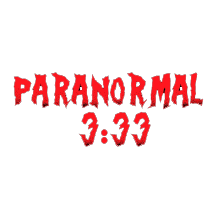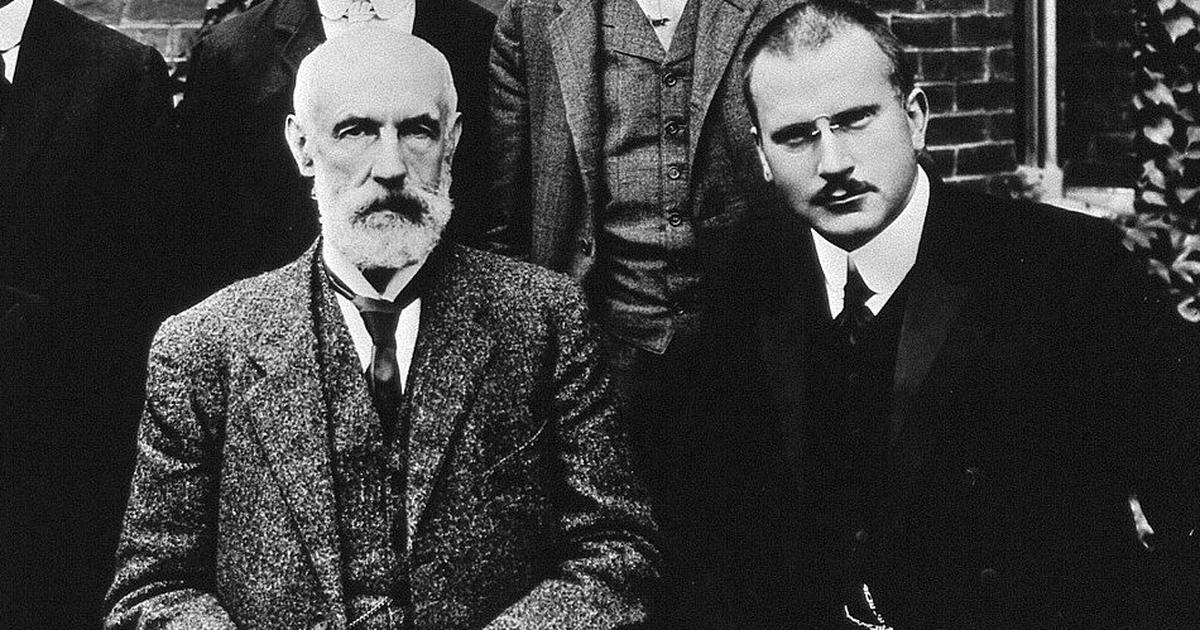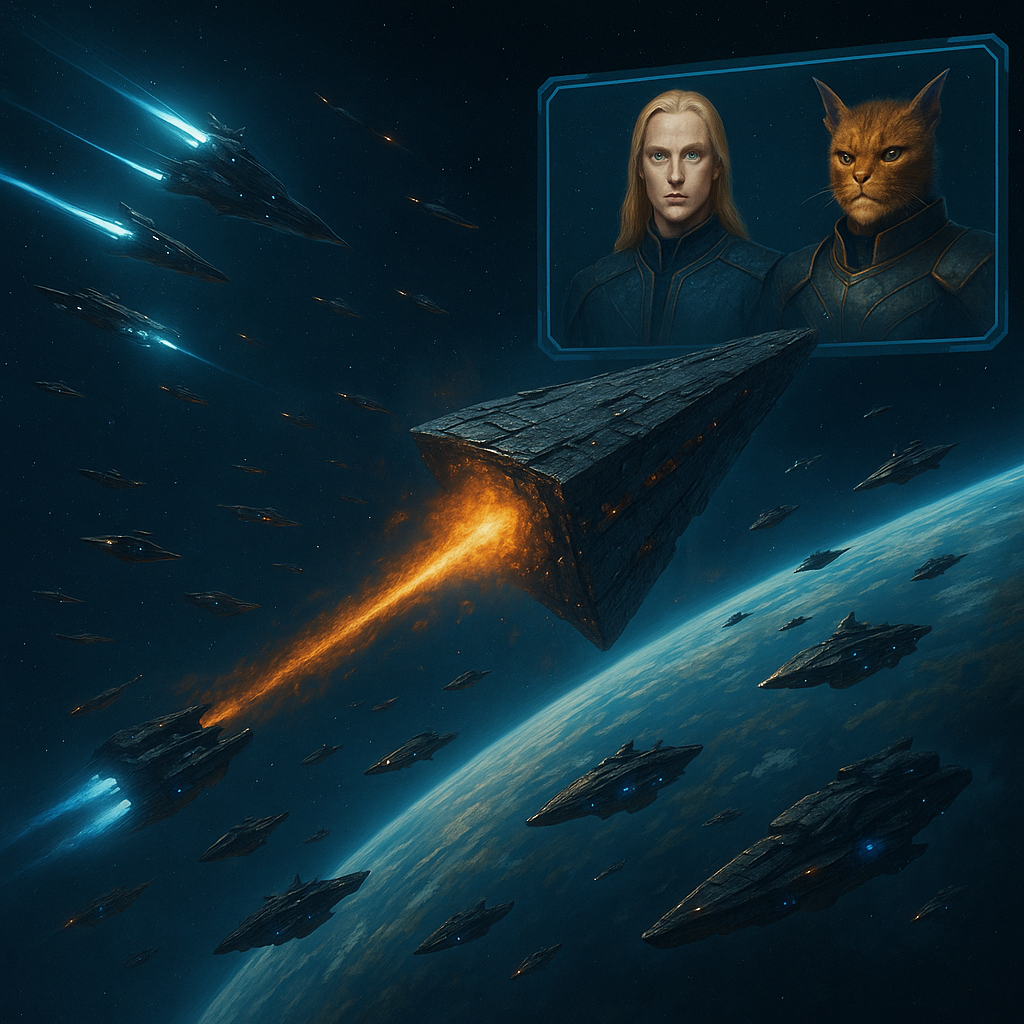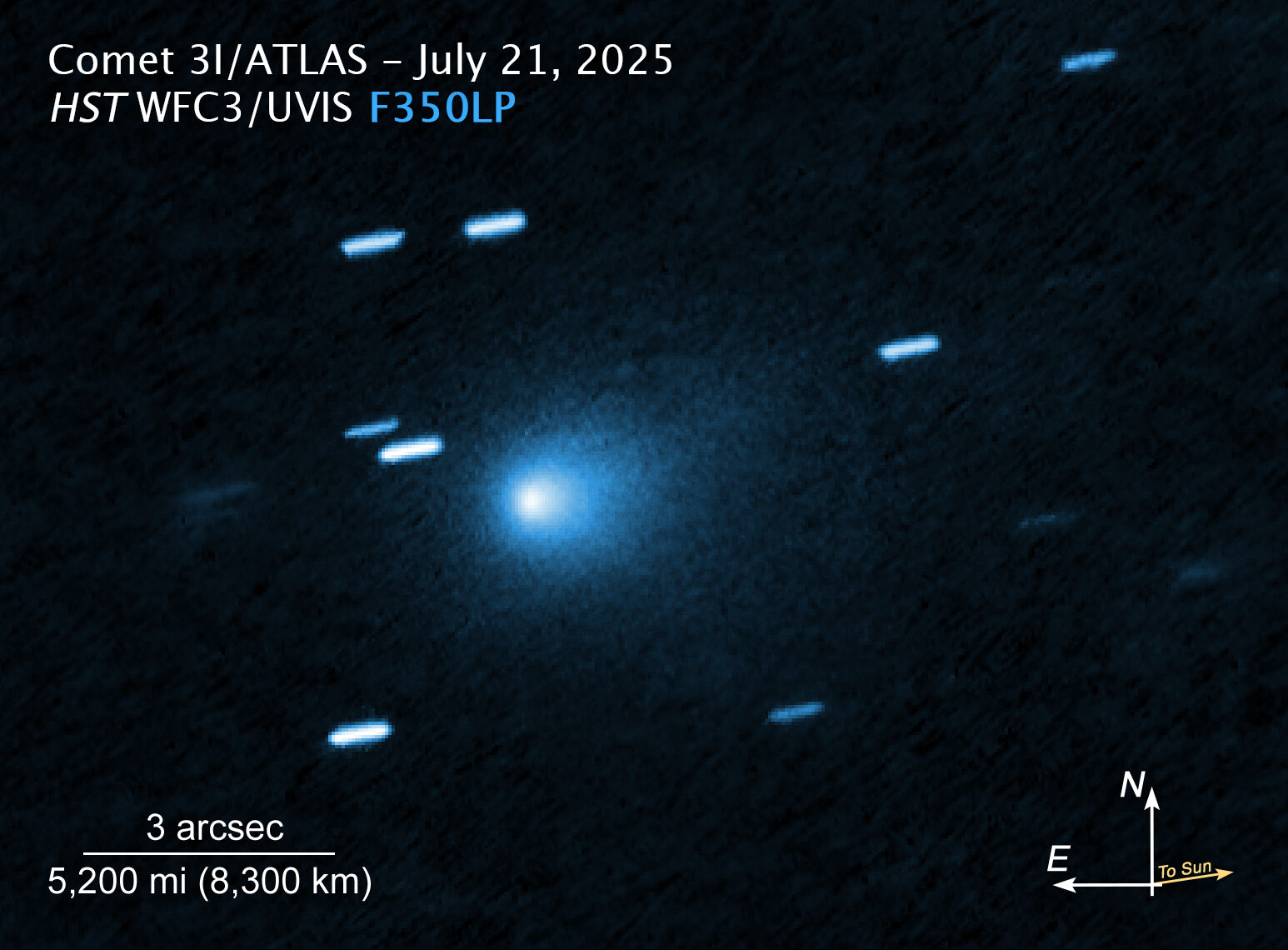Objective of the Text: To explore how the theories of the unconscious from Sigmund Freud and Carl Jung, combined with the modern neuroscience of sleep, can offer a powerful explanation for a wide range of paranormal phenomena, from oneiric premonitions to encounters with archetypal entities.
Introduction: The Shadow in the Bedroom
It is one of the most terrifying experiences a human being can endure. It occurs in that borderland between sleep and wakefulness; that instant when consciousness returns before the body does. Your eyes open. Your mind is lucid, aware of your surroundings—the shape of the window, the chair in the corner, the clothes on it—but your body does not respond. You try to move an arm, to scream, but you cannot. You are trapped, a prisoner in your own flesh.
And then, you feel it. A presence in the room. You don’t always see it clearly, but its intention is unmistakable: it is heavy, ancient, and malevolent. Sometimes, you feel a weight on your chest, an invisible force that oppresses you and steals your breath as the dark figure approaches from the foot of your bed.
For centuries, we have tried to name this shadow. Ancient cultures called it a demon, incubus, or succubus. Modern ufology has labeled it a “bedroom visitor” or an alien abductor. Conventional science dismisses it as a simple “hypnagogic hallucination,” a temporary glitch in the brain upon waking.
But what if all these explanations fall short? What if the entity is not an external demon, an alien from space, nor a simple brain malfunction? But rather something much more intimate and, at the same time, universal: a visitor from the depths of our own minds?
In the early 20th century, two pioneers dared to draw the first maps of this vast and unknown inner territory: Sigmund Freud and Carl Jung. As cartographers of the psyche, they showed us that our conscious mind is merely the tip of an iceberg. Freud gave us the key to the “basement” of the mind, the personal unconscious, where our traumas and desires are hidden. But it was Jung who discovered that beneath that basement, there was no solid ground, but a subterranean ocean that connects us all: the collective unconscious.
This article will follow their map. We will journey from Freud’s personal dreams to Jung’s universal myths to propose a bold theory: that the origin of many of our ghosts, demons, and monsters is not external. It emerges from the factory of our own shared psyche.
Chapter 1: Freud and the Hidden Door of Dreams
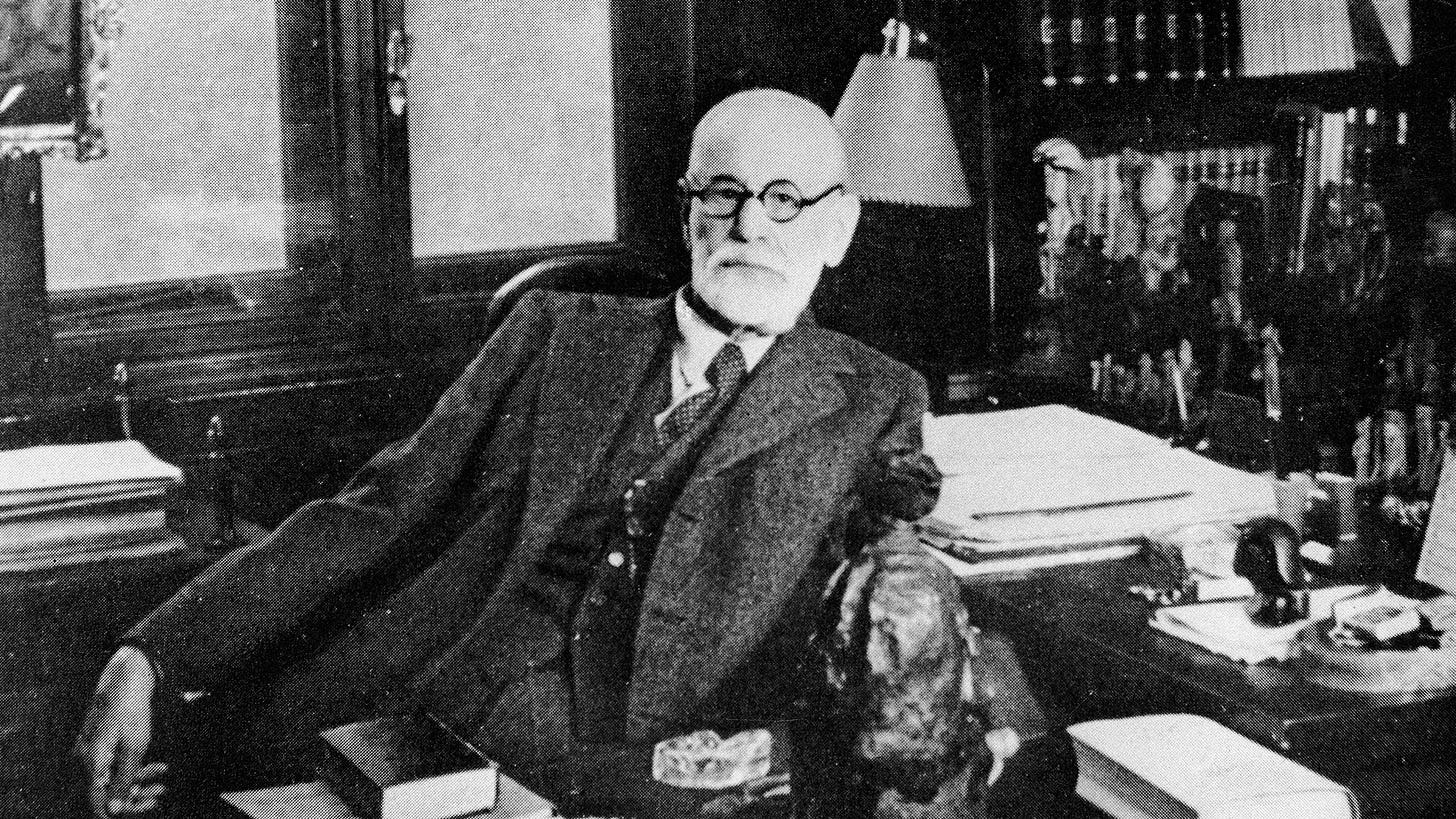
Before the maps of the human genome or magnetic resonance images of the brain existed, one man dared to be the first cartographer of the unseen: the Viennese neurologist Sigmund Freud. Although he is known today as the father of psychoanalysis, a rationalist who anchored the mind to biology, Freud was also an explorer of the strangest frontiers of the psyche. As various historians confirm, he showed a profound interest in mystical and paranormal phenomena, topics he often discussed with his then-disciple, Carl Jung.
The Foundation: The Basement of the Mind
To understand how Freud approaches the inexplicable, we must first descend into his most famous discovery: the unconscious. Freud proposed that our conscious mind—what we think, feel, and remember at will—is merely the facade of a much larger and darker building.
Let’s use a metaphor: imagine your mind as a house. The living room, well-lit and tidy, is your consciousness. But underneath, there is a dark and dusty basement you rarely enter. This is Freud’s personal unconscious. In this basement, there are no external monsters; our own are there. Here we throw everything we don’t want to see: our unspeakable fears, forbidden desires, and childhood traumas. They do not disappear; they simply hide in the darkness, influencing everything we do from below.
The Dream Stage: The Theater of the Repressed
If the unconscious is a locked basement, how can we know what’s inside? Freud gave us a master key: dreams. He called them the “via regia” or the royal road to the unconscious.
For Freud, dreams are not simple, meaningless fantasies; they are a nightly theater. On this stage, the inhabitants of the basement—our repressed desires and fears—finally get a chance to perform. But they cannot show themselves as they are, for they would be too shocking for our consciousness. So they wear disguises, symbolic masks. A forbidden desire might appear as a strange object; a deep fear, as a chase. The dream is a coded play, and the psychoanalyst’s job is to be the critic who interprets it.
The Central Metaphor: The Psychic Iceberg
Perhaps the clearest way to visualize Freud’s model is with the famous iceberg metaphor. Our mental life is a colossus of ice floating in the ocean. The small tip that juts out of the water, visible and defined, is our conscious mind. But the immense and dangerous submerged mass, the 90% we do not see, is our personal unconscious.
Dreams, then, are like the strange creatures and deep currents that emerge from that hidden mass, bubbling to the surface in mysterious forms. Although Freud maintained a cautious public stance to protect the scientific reputation of psychoanalysis, his interest in phenomena like telepathy suggests he suspected that even stranger messages than he admitted could rise from those depths. For him, however, a paranormal experience or a myth was often a symptom, a manifestation of an individual’s personal psychopathology disguised as a universal mystery.
Freud gave us the map to the basement of our own house, convinced that all our ghosts were personal. However, his most brilliant student suspected that this door led not only to our own secrets, but to the secrets of all humanity.
Chapter 2: Jung and the Shared Ocean of Humanity
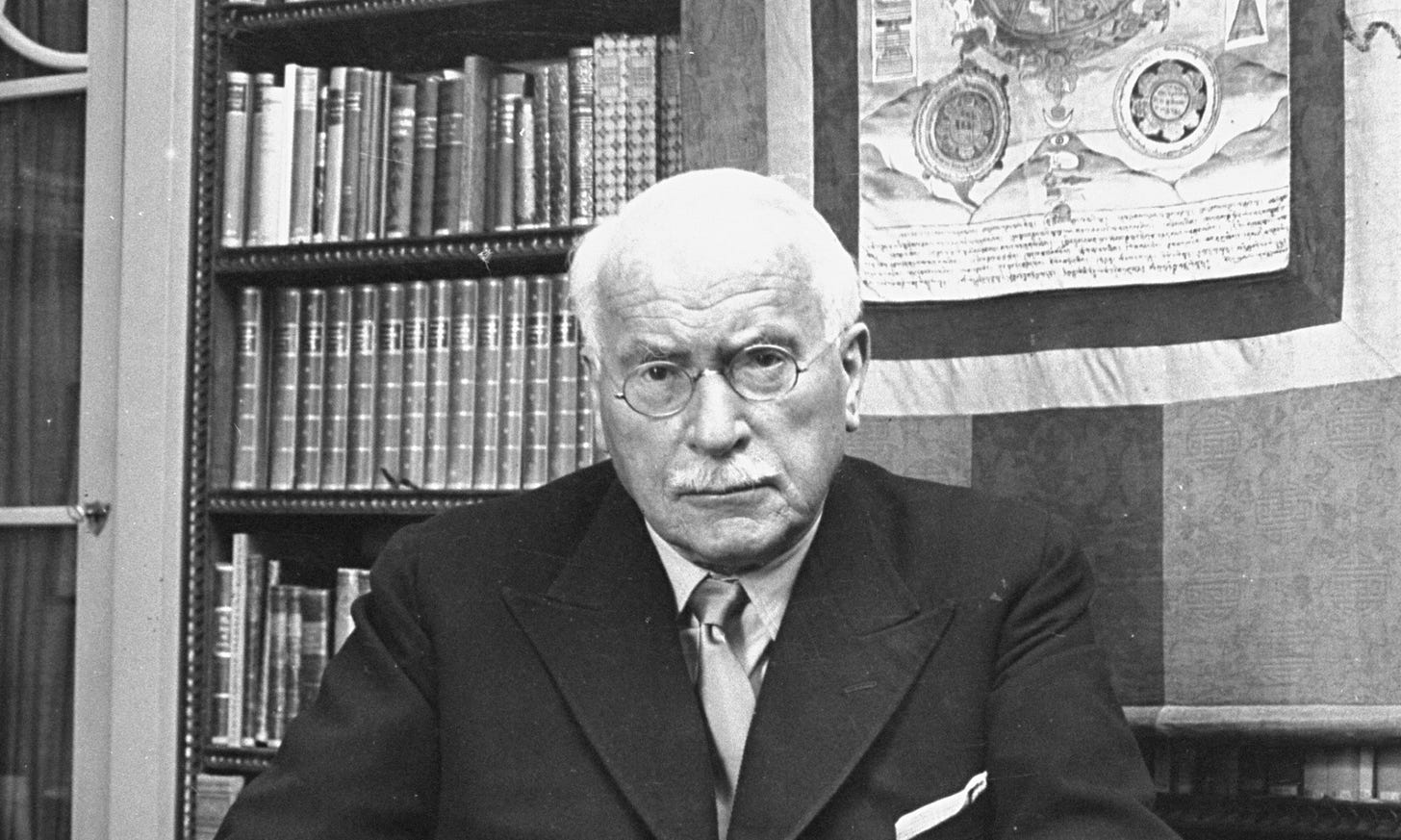
The relationship between Sigmund Freud and his most promising disciple, Carl Gustav Jung, is one of the most fascinating and tragic in the history of psychology. Freud saw in Jung the heir who would carry psychoanalysis to the world, but Jung, a man with a profound interest in mythology, religion, and parapsychology, could not contain his ideas within the limits his master had drawn. The rupture was inevitable. While Freud interpreted great myths as mere manifestations of individual psychopathology, Jung saw in them the proof of something much larger: a shared memory of all humanity.
The Expansion of the Idea: From the Basement to the Ocean
Jung accepted the existence of Freud’s “basement,” the personal unconscious where we store our traumas and secrets. However, he posited that beneath this personal layer existed a much deeper and more universal level: the Collective Unconscious.
This is not a memory we build during our lifetime, but one we inherit. It is a psychic legacy, a set of experiences and memories shared by all human beings throughout history, simply by virtue of being human.
The Central Metaphor: The Archipelago of Consciousness
To visualize this idea, let’s use a new metaphor. If Freud’s unconscious is a private, personal lake, Jung’s is a vast subterranean ocean that stretches beneath the entire planet. Each of our conscious minds is like a small island emerging on the surface. We seem separate and unique, but under the water, we are all connected by the same submerged landmass and bathed in the same deep, ancestral waters.
The Inhabitants of the Ocean: The Archetypes
This inner ocean is not empty. It is populated by forms of psychic life, universal patterns that Jung called Archetypes. They are not personal memories, but the primordial “blueprints” or innate images of the human experience that reside in the collective unconscious. They are the original molds for every hero, god, demon, and monster that has populated our legends and our nightmares.
Jung identified many archetypes, but some are crucial to understanding the origin of our ghosts:
- The Shadow: Represents everything we repress and deny about ourselves: our anger, our greed, our darkest instincts. It is the “other self” we do not want to admit exists.
- The Trickster: A chaotic, unpredictable, and amoral figure. It is the goblin that moves things, the clown that mocks authority. It is not necessarily evil, but its nature is to break rules and challenge order.
- The Anima (in men) and the Animus (in women): The representation of our inner counterpart. It is the idealized image of the feminine in the male psyche and the masculine in the female psyche, but it can also have a dark and terrifying face.
- The Wise Old Man or the Great Mother: Figures of authority, knowledge, and power, who can appear as benevolent guides or as terrifying tyrants.
Jung, unlike Freud, did not believe we were haunted solely by our personal demons; he believed we were haunted by the memory and patterns of all humanity.
Chapter 3: The Monster Factory: Giving a Face to the Archetypes
If the collective unconscious is a primordial ocean, then our conscious mind is the beach. Most of the time, we only see the calm surface, but under certain conditions—a storm of stress, the high tide of a deep dream, or the fog of an altered state of consciousness—the creatures of the deep are thrown onto the shore of our perception.
This process is what Jung called projection. It is a psychological mechanism by which we attribute an internal quality of ours to an external person or object. But Jung went beyond the Freudian concept; for him, we don’t just project our little personal secrets. In moments of great intensity, we can project the powerful and universal archetypes that live in our collective unconscious.
When this happens, the archetype ceases to be an abstract idea and dresses itself in the clothes of our culture and our personal fears, manifesting as an entity that we perceive as completely real and external. This is the monster factory.
The Shadow → The Shadow Person
The archetype of The Shadow is, perhaps, the easiest to understand. It is the sum of everything we repress: our darkest instincts, our anger, our cruelty; everything that society and we ourselves consider unacceptable. It is our “dark double.”
Now, let’s think about one of the most reported paranormal phenomena in the world: the Shadow Person. Witnesses describe a humanoid silhouette, densely dark, often seen out of the corner of the eye or during sleep paralysis. It has no face, no details, only an unmistakable presence of dread. The connection is almost literal: in a moment of psychological vulnerability, we project our darkest, most repressed side outward, and it takes the most basic form possible: a human-shaped shadow.
The Trickster → The Poltergeist and the Goblin
The archetype of the Trickster is a figure of chaos and disruption. It is not inherently good or bad, but its function is to break rules, challenge the established order, and expose the truth through anarchy and mischief. It is the Coyote of Native American legends, the Loki of Norse mythology, the goblin of European folklore.
What paranormal phenomenon does this description resemble? The poltergeist. The German word means “noisy ghost,” and its activity is characterized by disorder: flying objects, slamming doors, unexplained noises. Interestingly, poltergeist activity often centers on an adolescent living in the house, a person going through hormonal chaos and rebellion against norms. The Jungian hypothesis is clear: the repressed psyche of the adolescent, charged with the chaotic energy of the Trickster, is projected onto the environment, manifesting as real physical disorder.
The Dark Anima/Animus → The Bedroom Visitor
This is one of the most complex archetypes: the Anima (the inner feminine image in a man) and the Animus (the inner masculine image in a woman). They represent our connection to the opposite sex, the soul, creativity. But, like every archetype, they have a dark side. A negative Anima can be seductive and destructive; a negative Animus can be a brutal critic, a judge, or an abuser.
Let’s now consider the phenomenon of the “bedroom visitor,” which ranges from the ancient myths of incubus and succubus to the modern accounts of alien abduction. The pattern is surprisingly consistent: the victim is paralyzed in their bed, in a state between sleep and wakefulness. An “other” entity (male or female, demonic or extraterrestrial) imposes itself upon them, often with connotations of experimentation or violation. According to this theory, it is not an external visit, but the projection of the archetype of the “other” in its most terrifying and dominant form, a confrontation with a part of our own psyche that we do not control.
Thus, the pantheon of the paranormal ceases to be a random collection of monsters. It becomes a coherent cast of characters, a direct reflection of the fundamental structures of the human mind. We have seen the “what” and the “who” of our ghosts. Now, we must explore the “when” and the “how”: the biological portal in our own brain that allows these internal monsters to cross the threshold into our reality.
Chapter 4: The Biological Portal: The Science of Sleep Paralysis
We have established a fascinating cast of archetypes—The Shadow, the Trickster—that inhabit the depths of our collective psyche. But for these internal figures to manifest as external paranormal experiences, they need a doorway, a moment when the veil between our world and theirs becomes thin enough.
That door is not found in a cemetery or an ancient castle. It is found within the biology of our own brain.
The Scientific Anchor: Trapped Between Worlds
Neuroscience has long studied the strange phenomena that occur on the frontiers of consciousness. Two of the most relevant to our investigation are:
- Hypnagogic States: This is the technical term for the transitional state just as you are falling asleep (hypnagogic) or waking up (hypnopompic). You are neither fully asleep nor fully awake; you are on a threshold, a place where the rules of reality become flexible, and it is common to experience vivid images, sounds, and even tactile sensations.
- Sleep Paralysis: This is a phenomenon in which your brain regains consciousness, but your body temporarily remains in the state of muscle paralysis (atonia) characteristic of REM sleep. The result is terrifying: you are awake, aware, but you cannot move or scream.
The Vulnerable Brain: Fear Unleashed and Reason Asleep
When we are in these states, especially during sleep paralysis, our brain operates in a very particular and vulnerable way. Two key areas enter into a dramatic conflict:
- The Frontal Lobe (The Rational Guardian): This is the part of our brain responsible for critical thinking, logic, and reality-testing. It is the CEO of our mind. During sleep paralysis, this guardian is partially “disconnected” or operating at half capacity, as if it were still drowsy.
- The Amygdala (The Threat Detector): This is one of the most primitive parts of our brain, our alarm system. It is responsible for the fight-or-flight response and processing fear. In sleep paralysis, the amygdala becomes hyperactive.
The result is the perfect recipe for terror: you have an alarm system screaming “DANGER!” at the top of its lungs, and a rational guardian who is too asleep to calm it down and say, “relax, it’s just a shadow.”
The “Biological Portal” Hypothesis
Conventional science stops here, calling the “presence” we feel during sleep paralysis a simple hallucination, a trick of a frightened and confused brain. Psychological research acknowledges that these “apparitional experiences” and “unusual pseudo-hallucinatory perceptions” are common even in non-clinical populations, often in people with a higher propensity for fantasy.
But the Jungian hypothesis goes one step further. It proposes that this unique brain state is not a generator of meaningless hallucinations, but the perfect biological portal.
The state of suppressed reason and exacerbated fear weakens the barrier between our conscious mind and the vast ocean of the collective unconscious. The dark figure we perceive is not a random creation of our hyperactive amygdala. It is the archetype of The Shadow “leaking” through that portal. Our brain, in its primitive state of panic, takes that pure archetypal energy and gives it the only form it can conceive at that moment: an intruder, a predator, a monster.
We have found the portal. We have seen how the monsters can cross. But one last and crucial question remains: how can these visitors from our minds sometimes leave footprints in our physical world?
Chapter 5: Synchronicity: When Thoughts Move Objects
So far, we have built a model that explains apparitions as projections of our own collective psyche, manifested through the biological portal of our brain in vulnerable states. It is an elegant theory to explain what we see and feel. But it faces a critical question, an obstacle that seems to return us to the realm of the supernatural: “But how do you explain a fallen object?”
When the shadow not only watches us from the corner but also knocks a book off the shelf, the theory of projection seems to fall apart. Or does it? Carl Jung himself, who was dedicated to the study of mythology, alchemy, and parapsychology, faced this very problem. He needed a principle that could connect the psyche with matter without violating the laws of causality. And he found it in one of his most fascinating and controversial concepts.
The Key Concept: Jung’s Synchronicity
Jung introduced the concept of Synchronicity to describe events that are connected by meaning, not by cause and effect. It is a meaningful coincidence.
Let’s use a parable to understand it. Imagine you dream of a golden scarab beetle, and the next morning, while telling the dream to your therapist, a beetle of a very similar color taps against the office window.
- Your thought did not cause the beetle to fly to the window.
- The beetle did not cause you to have the dream.
They are two independent events in the physical world. However, their connection at that precise moment is so improbable and laden with meaning for you that it feels like a miracle. For Jung, this is not chance; it is synchronicity: an acausal connecting principle that unites a person’s psychic state with an event in the external world.
The Manifestation Hypothesis: The Ghost Doesn’t Push, It Syncs
Now, let’s apply this principle to the phenomenon of a poltergeist or a haunted house.
A particularly potent archetypal projection—like that of the Trickster generating chaos or The Shadow generating terror—creates a psychic state of immense intensity in the witness. This emotional charge is not contained; according to Jung, it can create a fertile “field” for synchronistic events to occur.
The glass doesn’t fall because an invisible ghost with ethereal hands pushes it. The glass falls because, at that precise instant, an imperceptible vibration from a passing truck, a subtle change in air pressure, or simply the accumulated tension in the glass itself causes it to fall. It is a perfectly normal and random physical event.
Synchronicity is the “glue” that binds the internal experience (the projection of the archetype you are witnessing) with the external event (the falling of the glass). Your mind, in that state of high emotional charge, cannot help but merge both events into a single, terrifying causal experience: “the ghost knocked over the glass.”
The physical phenomenon is real, but it is not caused by the ghost. It is an independent event that aligns meaningfully with the psychic manifestation, creating a complete and convincing paranormal experience.
We have completed the map of the haunted mind. We have seen how our inner demons are born from a shared ocean, how they cross the biological portal of our brain, and how, through mysterious synchronicity, they seem to leave footprints in our physical world. Now, all that remains is to ask what all of this truly means.
Conclusion: We Are the Monsters
We have completed our journey, a descent that took us from the personal basement of Freud’s dreams to the vast ocean of Jung’s shared myths. We started with a question about the shadows that haunt us in the night and found a possible origin, not in distant dimensions or the afterlife, but in the most intimate and yet most universal territory that exists: the human psyche.
We saw how Freud, in analyzing myths, viewed them through the lens of individual psychopathology, while Jung found in them the evidence of a collective unconscious that unites us all. We anchored these ideas in modern neuroscience, identifying sleep paralysis and hypnagogic states as the perfect “biological portal”: a moment when our rational brain cedes control and allows ancient archetypes to filter into our perception. Finally, with synchronicity, we explored a possible bridge between these powerful internal projections and their apparent effects on the physical world.
The Final Reinterpretation
By connecting these points, we arrive at a conclusion as profound as it is unsettling. The paranormal, in many of its aspects, ceases to be an invasion of external entities and becomes an eruption. An eruption of the oldest, most potent, and universal forces that dwell within our own shared psyche.
The fundamental question in the study of these phenomena has always been whether they are manifestations independent of the subject or if, on the contrary, they are produced by a person, whether consciously or unconsciously. Our exploration suggests the latter: that it is we who give birth to our own ghosts, projecting the archetypes of an unconscious we have inherited from countless generations. The Shadow Person, the Trickster, the Bedroom Visitor… they would not be visitors, but natives of our own inner world.
The Final Question for the Reader
Thus, the circle closes, and we return to the beginning, but with a new perspective.
Perhaps the question is not whether ghosts and monsters are real.
Perhaps the real question is if we have ever stopped creating them from within.
About the Author
For more than five years, Alberto Cardenas has journeyed to the epicenter where myth and reality meet. As a UFO and paranormal phenomenon researcher, and a collaborator with the Paranormal & UFO Research Center RGV, his work consists not only of seeking evidence but of narrating the stories that arise from the inexplicable. Through his own platform, Paranormal 3:33, he intertwines field investigation, popular culture, and critical analysis. The result is stories that captivate both those who seek to believe and those who need to doubt, proving that a good story transcends all barriers. For Alberto, myths are not simple anecdotes, but windows into the depths of the human condition. His work does not chase definitive answers, but something much more valuable: keeping the question alive. Because it is in the exploration of the unknown where we often find ourselves best.
Contact
Do you have a story to tell, want to share a reflection on this article, or start a collaboration? Your perspective is valuable. You can write to us at:
- alberto@paranormal333.com
- alberto@paranormalrgv.com
Regarding the Reproduction of this Text
We greatly appreciate your interest in sharing and discussing the ideas presented in this article. All content in this publication is the intellectual property of the author. If you wish to cite, reproduce, or distribute this material, either in part or in its entirety, in any digital or printed medium, we kindly ask that you get in touch via the provided emails to request the corresponding authorization. We are excited by the idea of these explorations reaching more people and would be happy to discuss it.
